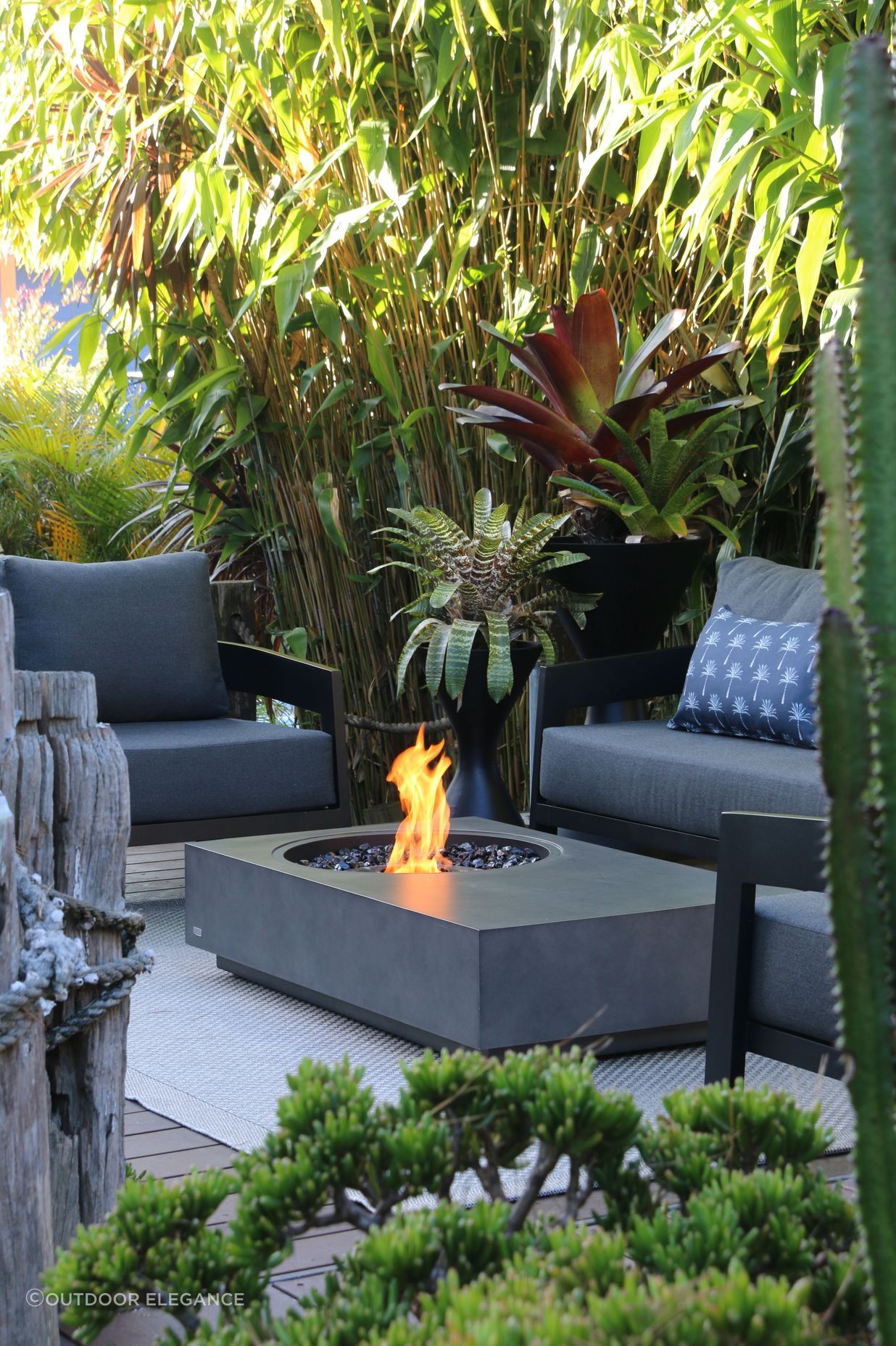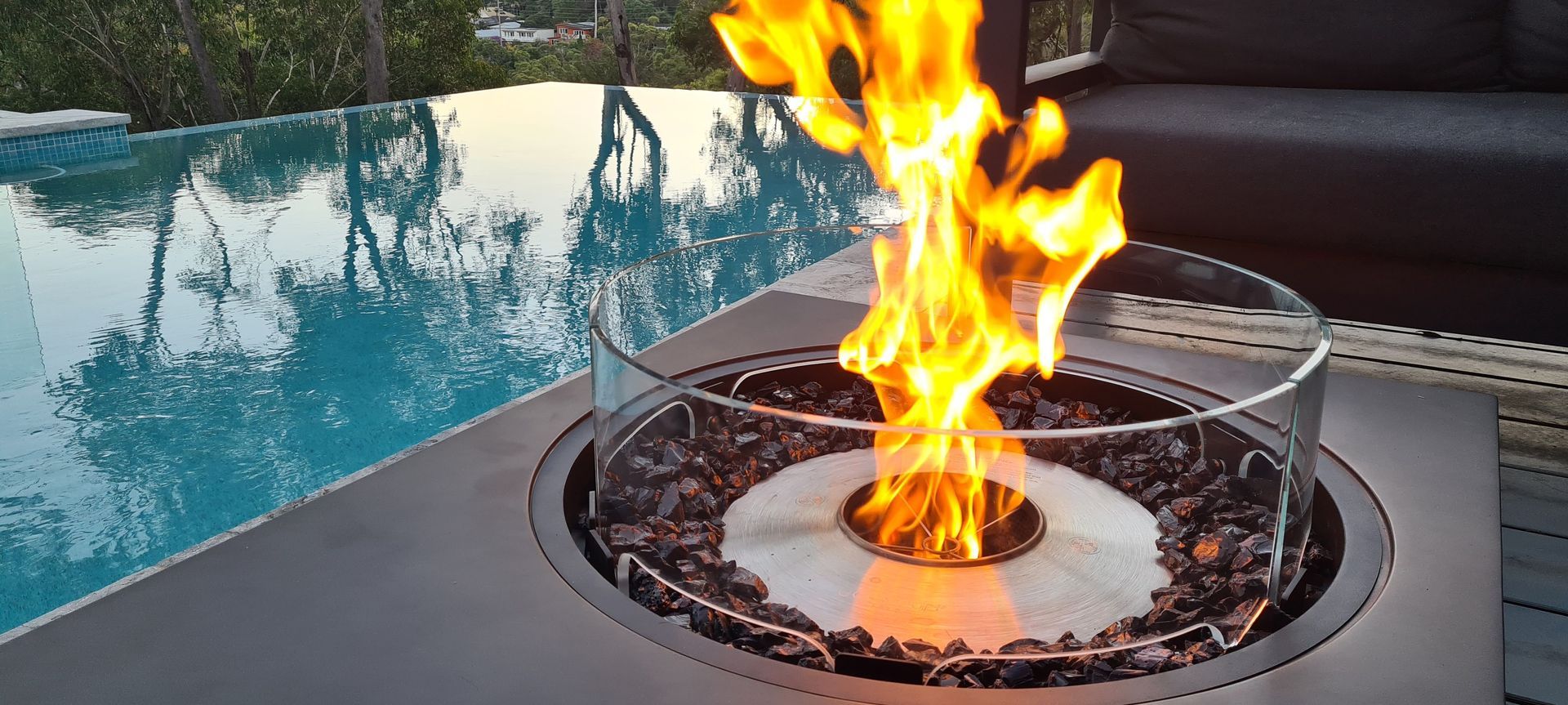A fire pit not only serves as a source of warmth but a centrepiece for outdoor gatherings, a catalyst for memorable moments, and a symbol of true comfort. With so many firepits on the market today, there are various factors to consider when searching for the perfect one.
We chat with Jason and James of Outdoor Elegance, identifying the different deciding factors when searching for outdoor heating and whether ethanol or electric heating is the best option for you and your home.
Outdoor heating will not necessarily turn a cold, wet and windy outdoor night into a pleasant summer evening, but it will give you the ability to enjoy your outdoor space for longer and on more occasions than if your area did not have it.


Purposeful Placement
Identifying your space is the best first step to finding your perfect firepit. Whether you’re seeking ambience or a trustworthy source of heat, determining the purpose of its placement in your outdoor area and what you want to gain from it will help narrow your search.
“If you are looking at heating a dining space, then overhead electric heating will be for you. This will also work for an undercover lounge area. However, in that scenario, ethanol is a great option to consider as a “Fire Table” - this will also provide an incredible focal point,” says James.
“Electric heating can be seamlessly integrated into your outdoor area and accessed with the flick of a switch, literally. Electric heating is the most efficient way to heat a large area if you are looking for a heating solution for your outdoor space.”
Fuel Preferences
After deciding where you want your fireplace situated, your fuel choice is another pivotal decision and your next factor to consider. Depending on what fuel source you go for, this decision will determine the aesthetic and functionality of your outdoor fireplace.
If you prefer the crackling aura of a fireplace and the rustic charm of smoke, opting for a wood fire pit may be for you. “Wood fires lend themselves to ambience and social interaction with the fire as a focal point,” says James. “However, wood heating can be messy, both in the ash and carbon produced and spare fuel you must have on hand. "
“Ethanol is much cleaner and can be turned on and off easily with no need to build a fire, but it does not produce as much heat as a wood fire. Ethanol heaters can be used in an enclosed space; if you can trap the heat, they will heat a large indoor/outdoor area. It also recreates the magic of a fire, providing a centrepiece in a relaxing space. Unlike a firepit, it can be used in an undercover or enclosed space as it burns completely clean, producing no smoke, soot or ash. As opposed to electric, fuel is required.
“Electric heating is clean and best to heat a large volume of space; once installed, it is easy to operate and cost-effective. There are options for all-weather spaces and undercover; even stylish portable models now can be positioned where you need them most.”
Beyond functionality, the design of your fire pit serves as a reflection of your personal taste and outdoor aesthetic. The myriad of styles, from rustic stone enclosures to sleek stainless steel constructions, ensures a perfect match for every preference.
Environmental Impacts
The aura that comes with the perfect outdoor fireplace is undeniable, but considering the environmental impacts associated is also essential in your decision-making process. “Wood heating such as fire pits can be amazing, but take into consideration the mess it can cause, and the expense around buying properly seasoned firewood - if you burn unseasoned wood, this will cause a lot of smoke and emissions as it burns inefficiently.”
Cleaner-burning alternatives such as electric and ethanol heaters produce fewer emissions and serve to be more energy-efficient.
“Electric heaters are relatively affordable to run and efficiently heat a large space, making them much greener than wood heating. There is a lot of variety in sizes and power, so they can easily be tailored to an outdoor space.”
“Ethanol heaters such as Ecosmart run on Bioethanol (ethanol), a natural product made from fermenting the sugars in plant-based products - mainly sugar cane with yeast. It is clean-burning and carbon-neutral. Ethanol fire tables are usually augmented with other heating sources as the heating power of an ethanol fire can be limited in an exposed area.”
Discover more from Outdoor Elegance on ArchiPro.

